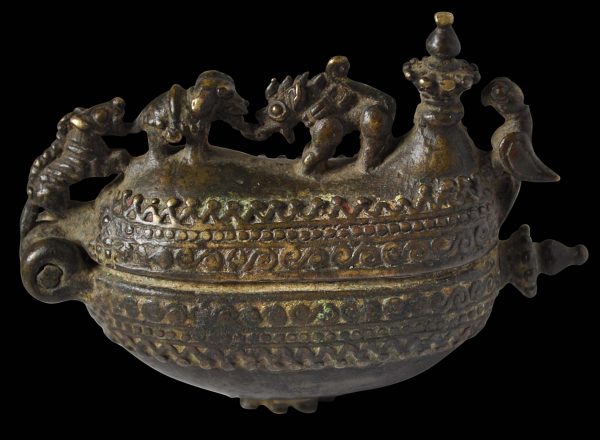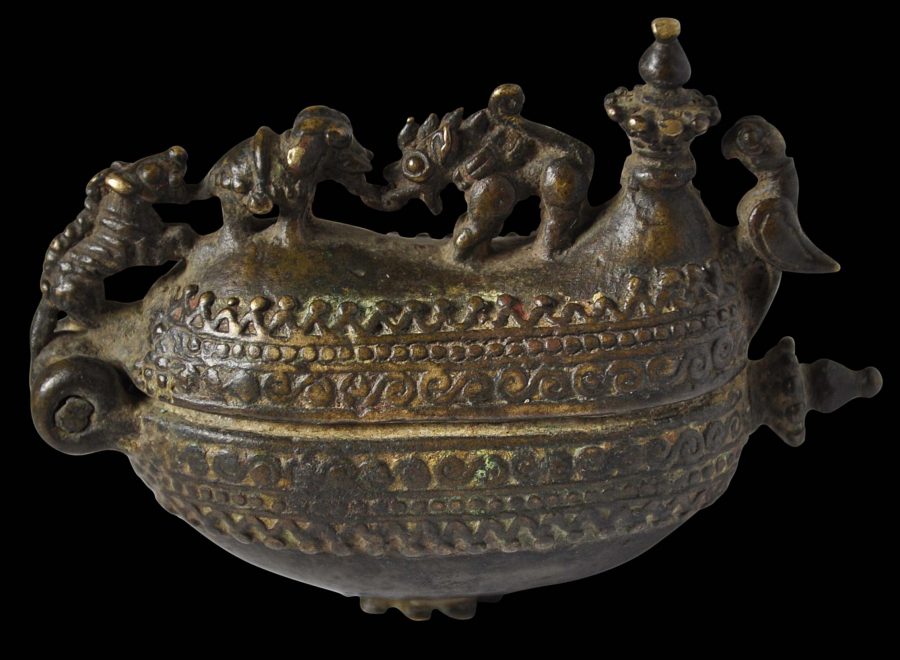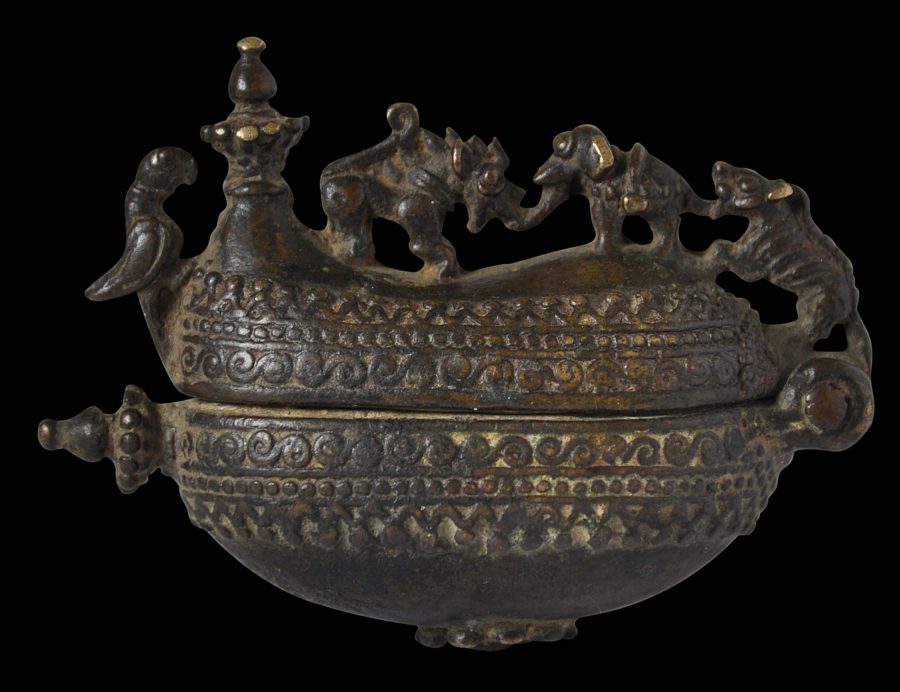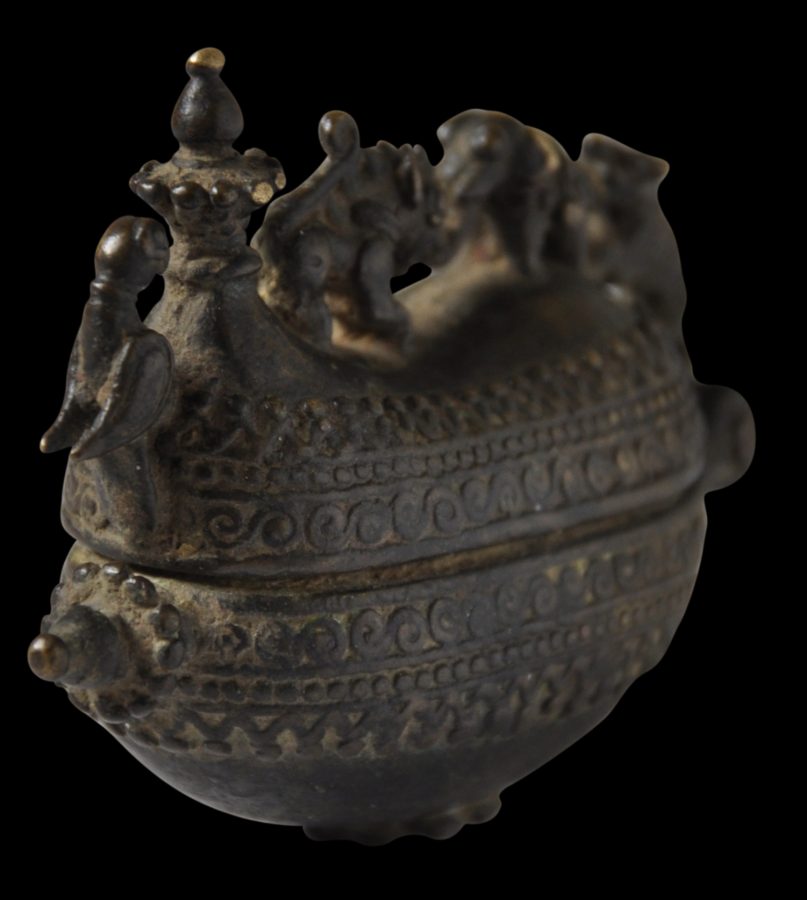This is a splendid little lime container, cast in bronze, in either from the south of India, possibly Kerala, or perhaps Maharashtra. (Cast bronze bangles with similar applied animal figures were made in Maharashtra – see Untracht, 1997, p. 248). Henry Brownrigg suggested Orissa.
Lime was used with the betel quid, betel being a mild social narcotic that was chewed. Conventional wisdom was that poison could be concealed in lime, so betel chewers would bring along their own lime to social occasions, hence the need for small, portable lime containers such as this one.
The example here, which still retains lime residue inside, is very unusual and particularly finely rendered. It is kidney shaped, and comprises two halves – a top and a bottom – which are hinged at one end.
The sides are cast with wonderful bands of zig-zag and other geometric motifs. The vase has a flower motif. The non-hinge end has a prominent floral-type finial.
But the most elaborate decoration is reserved for the top, which includes a parrot, another finial, a strange lion-type beast, an elephant and what might be a tiger. All are very finely cast.
Overall, this is an excellent gem of a piece. It has a fine, dark patina. It is in excellent condition.
References
Brownrigg, H., Betel Cutters from the Samuel Eilenberg Collection, Thames & Hudson, 1992.
Brownrigg, H., pers. com. September 2016.
Untracht, O., Traditional Jewelry of India, Thames & Hudson, 1997.






